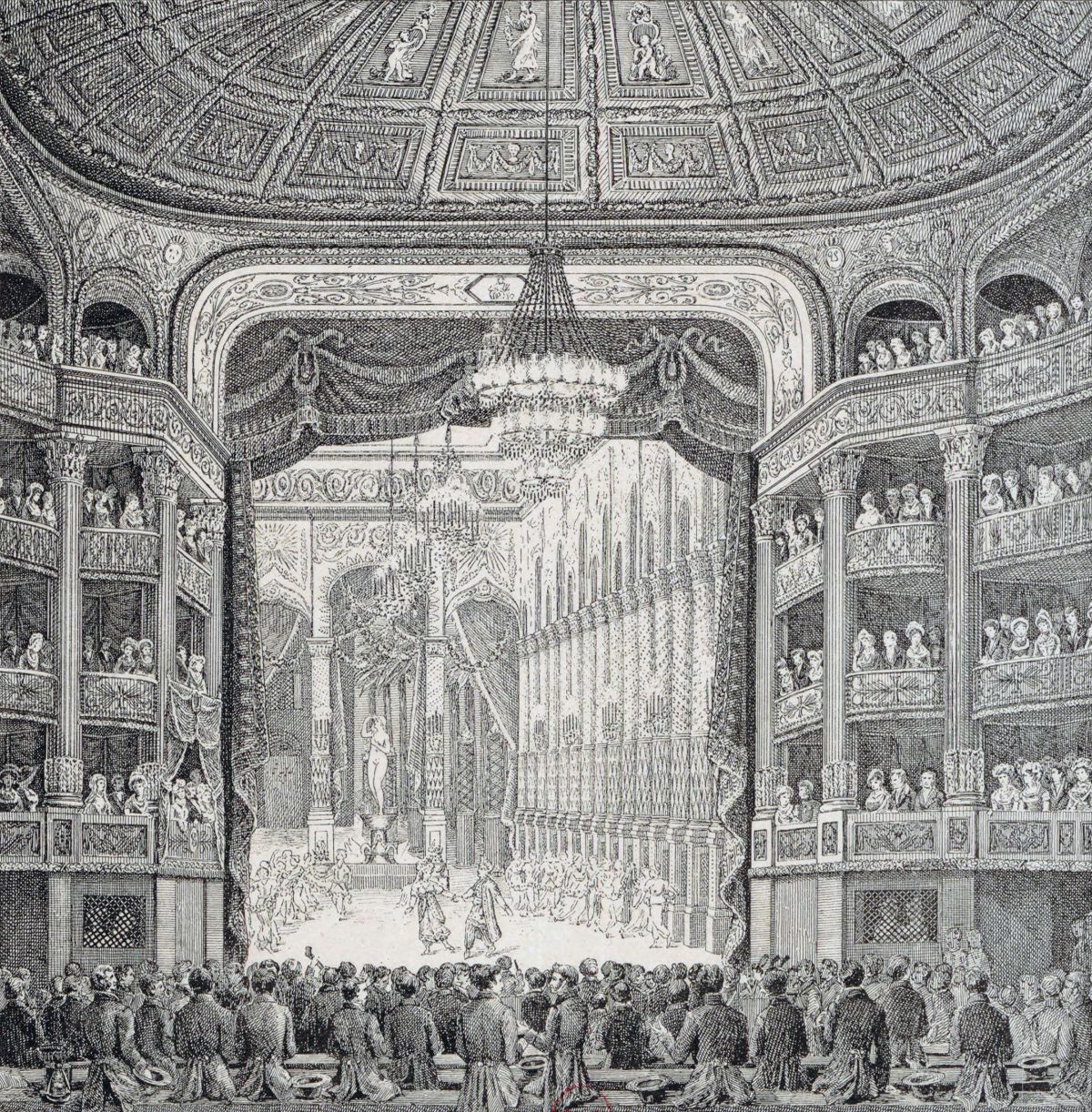What could link something as crude as coal with something as elegant as a classical ballet?
Our first answer is that most elegant thing of all, light.
Back to Giselle home
✨
Instructions
XIII

What could link something as crude as coal with something as elegant as a classical ballet?
Our first answer is that most elegant thing of all, light.
After inventors had worked out how to use coal to power steam engines, they discovered, at the turn of the 19th century, how to generate gas from coal and use it for lighting.
The full story is available on Wikipedia. And a brief version of the story of coal is here.
The first impact of gas-powered lighting was to transform the night life of metropolitan cities like Paris and London through greatly improved street lighting. Street lights enabled middle-class audiences to go out at night in safety as never before; theatre, ballet and opera all benefitted.
It is not an accident that the origins of the classical ballet more or less coincide with the introduction of gas-powered street lighting.
Lighting with gas also transformed theatrical productions, including the ballet, which until that time had been lit with candles and oil lamps. There is a comprehensive account of all this in the excellent book 'Theatre Lighting in the Age of Gas'.

You can see something of the effect of gas lighting in the illustration above which shows the inauguration of the theatre where Giselle was first performed.
A couple of things to note in particular:
The auditorium remained lit while the performance was in progress. It was only with the advent of electric lighting that house lights were turned down. As we know from experience at Shakespeare's Globe, having the house remain lit during the performance has a profound effect on the relation between the performers and the audience.
While it was a major improvement over oil lamps and candles, gas lighting still had serious limitations. It could be hung from the ceiling in lustres but not directed downwards. There was no equivalent of a modern spotlight. Instead, the stage was principally lit from a float at the front of the stage providing footlights and a series of wing lights that provided light from the both sides.
The effect was not flattering.
The effect of these lights on the performers is rendered evident by the obviously constrained aversion of their eyes, while the expression of the features is almost destroyed by the reversal of the shadows under which the face is usually and best seen.
Colour effects were limited but could be achieved by placing coloured cloths or glass over the lights.
Special effects like moonlight were possible and proved sensational for an audience not used to controllable lighting.
When you think about the original productions of Giselle it is worth considering what the effect of gas lighting would have been on the spectators' experience and how the choreography and stage direction would have had to work around and with its limitations and capabilities.
The combination of gas lighting and ballerinas' gauzy costumes was dangerous and it led, occasionally, to horrific accidents.
Theatre Lighting the Age of Gas (page 158) describes one incident that occurred in London in 1863-4:
While she was waiting in the wings to come on in the transformation scene, the dress of a dancer, Ann Hunt, was seen to be alight. Her friend, Sarah Smith, also a dancer, tried to beat out the flames but only succeeded in setting fire to her own costume. The two girls ran on to the stage, crossing to the other wing where a group of ballerinas shrank away from them, unable to help lest they in turn were set alight. Finally the stage manager came to their assistance, extinguishing the flames only after he himself was badly burned.
One girl died and the other was badly injured.
While coal was providing light for theatres in the form of gas (and occasionally incinerating some of the ballerinas), it was also hard at work fuelling the factories of the Industrial Revolution.
Andreas Malm's excellent book 'Fossil Capital' describes how concentrated and portable energy in the form of coal allowed 19th century capitalists, starting in Britain, to establish an economy based on exploitation of manual workers, many of them women and children. The degrading and shocking effects are graphically described by Friedrich Engels in 'The Condition of the Working Class in England'.
It is easy to see the ballerinas of the 19th century corps-de-ballet, Gautier's rats, as less fortunate predecessors of today's elite ballet dancers. But it is also possible to think of them as industrial workers in an age of coal. Working in a different kind of industry alongside their grimy and exploited brothers and sisters who toiled in the coal mines to provide light and in the cotton mills to make the fabric for their costumes.
The Romantic Ballet and the Industrial Revolution grew together driven by developments in lighting and patterns of nightlife in the city.
Now, as we move uncertainly towards a post-carbon future, with new forms of computer-controlled lighting in theatres located in locked-down cities that may, or may not, sustain a recognisable nightlife, it will be interesting to consider the implications of these 21st century developments for the future of ballet.
Chatbot